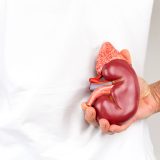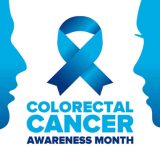

We hear a lot about different health risks, but type 2 diabetes has truly reached epidemic proportions in the U.S. According to the Centers for Disease Control and Prevention (CDC), 29.1 million American adults have diabetes, and only 21 million of them have been diagnosed. That means that 8.1 million more are undiagnosed, and are at risk for a wide range of diabetes-related health problems.
Diabetes and the Liver
Although kidney function is most often linked with diabetes, what most people don’t know is that the liver plays a significant role in the regulation of blood glucose.
In fact, the liver is where blood glucose is produced and stored, and it’s also the organ that helps regulate the levels of glucose and other energy sources in the blood. Through glycogenesis, the liver converts the glucose that is released when you eat carbohydrates into glycogen, the storage form of glucose, for later use.
When blood glucose levels run low, the liver uses the process of glycogenolysis to convert that glycogen back into glucose that can be used.
Blood Sugar: Too High or Too Low?
Most Americans who have diabetes are actually undiagnosed — so 27.8% of diabetics don’t know they have the disease. Many Americans are also pre-diabetic, with higher than normal blood sugar levels that are just under the diabetic range. It’s important to recognize the warning signs that let you know when your blood sugar is too high or too low.
High blood sugar (or hyperglycemia) is the concern for pre-diabetes and type 2 diabetes. According to WebMD, the most common symptoms of high blood sugar are:
- Increased thirst
- Frequent urination
- Fatigue
- Difficulty concentrating
- Headaches
- Blurred vision
- Weight loss
WebMD also reports that ongoing high blood sugar can result in a variety of health problems — including slow-healing cuts and sores; damage to the eyes, kidneys and blood vessels; nerve damage and loss of feeling in the extremities; and more.
But low blood sugar (hypoglycemia) can also cause its share of problems. According to Healthline.com, you might have hypoglycemia if you experience:
- Sudden mood changes or nervousness
- Pale skin
- Headaches
- Rapid heartbeat
- Sweating
- Tingling skin
- Loss of mental focus
- Loss of consciousness
Very low blood sugar can result in seizures or even a coma. And because some of these symptoms are common to both hypoglycemia and hyperglycemia, it’s important to be tested if you suspect you may be diabetic or pre-diabetic.
6 Suggestions for Diabetes Prevention
Since diabetes can cause so much damage, it’s best to try to regulate your blood sugar and keep it at normal levels. Try some of these easy ways to control your blood sugar through simple diet and lifestyle changes:
- Choose whole grains instead of processed products made with white flour. Complex carbohydrates in high-fiber foods help slow the absorption of glucose.
- Add more dairy to your diet. The protein, fat and lactose in milk and dairy make you feel full and slow the absorption of glucose.
- Get more sleep. Sleep at least eight hours per night, if you can, because being sleep-deprived affects your glucose and insulin levels.
- Add cinnamon to your coffee, tea, oatmeal, or yogurt. Researchers in Pakistan found a link between cinnamon consumption and a drop in blood sugar levels.
- Eat your spinach. This leafy green powerhouse — and other foods that are high in magnesium such as avocados, fish and nuts — can help prevent type 2 diabetes from developing.
- Lift some weights. The more muscle mass you have, the more effectively your body can burn glucose — and doing resistance training as little as one day a week is helpful as well.
As you can see, there are many ways to better regulate your blood sugar levels and keep diabetes at bay. Did you know that high-quality supplements can also help? For example, GlucoCare is formulated using traditional Ayurvedic herbs that have been researched and found to help with not only maintaining a normal blood sugar balance, but also help you maintain normal levels of triglycerides and cholesterol.
Type 2 diabetes is much easier to prevent than to control once you develop it, so do what you can to keep your blood sugars at a healthy level. As a side bonus, you’ll have more energy and more mental focus!




